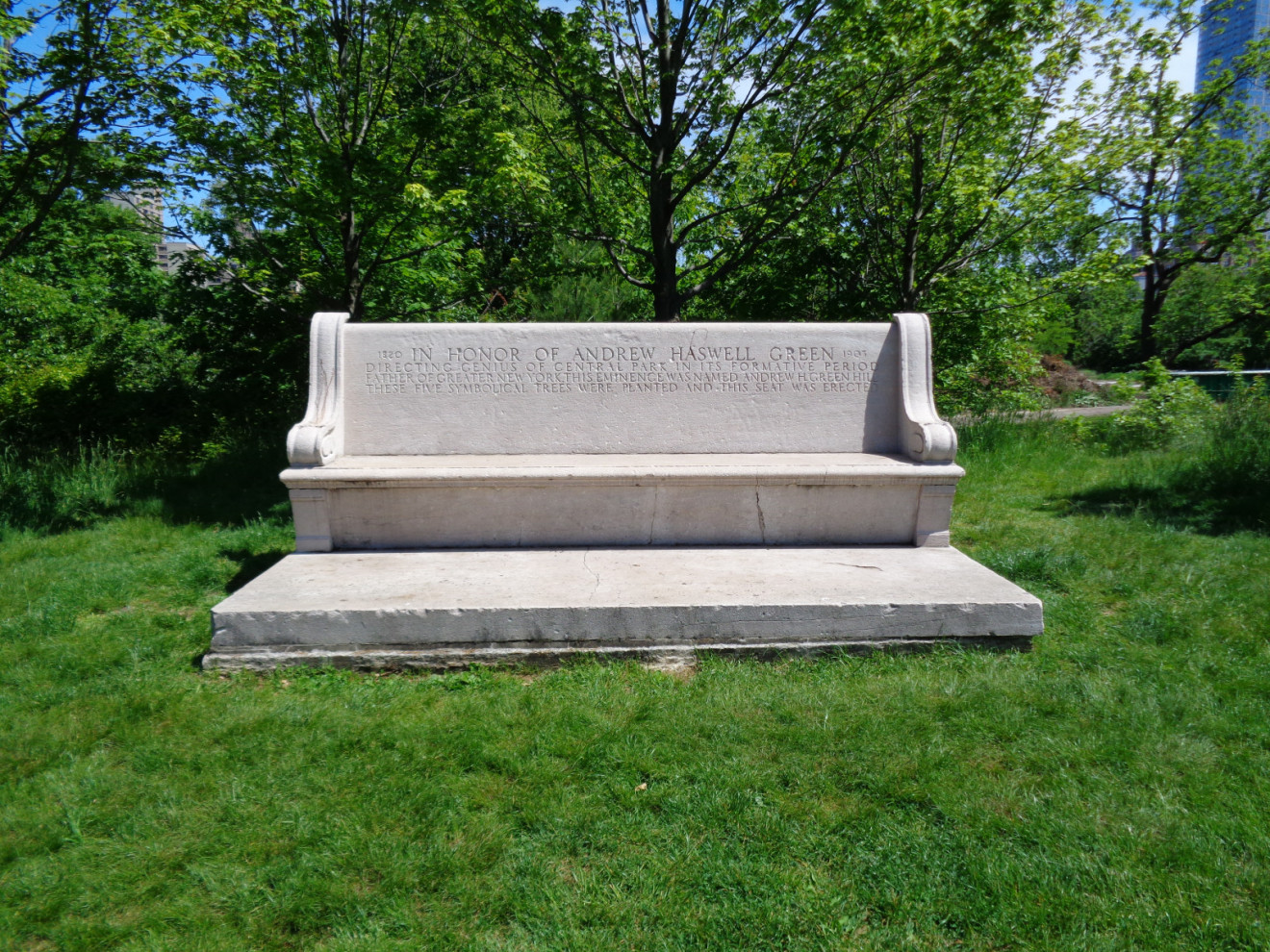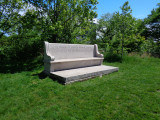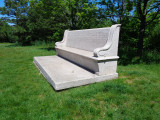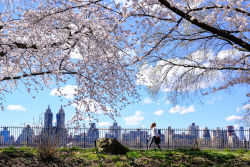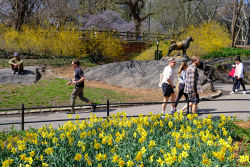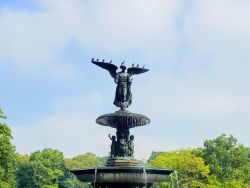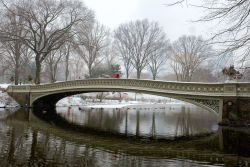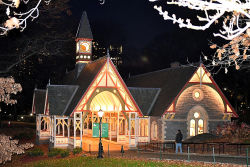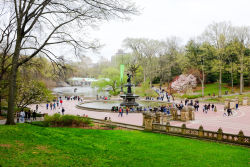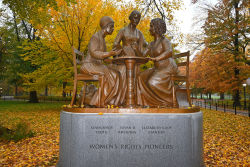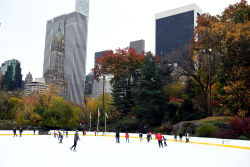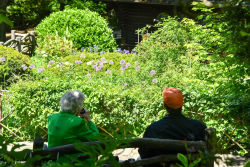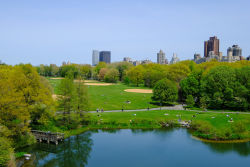Central Park
View all monuments in NYC Parks, as well as temporary public art installations on our NYC Public Art Map and Guide.
Andrew Haswell Green
| Artist: | John V. & M.V. Van Pelt |
| Dedicated: | 1928 |
| Location: | East Drive, opposite 104th Street |
Artwork History
This granite bench, dedicated in 1929, honors Andrew Haswell Green (1820-1903), a key figure in the history of Central Park who created many of New York’s cultural institutions and provided the driving force behind the movement to consolidate the City into five boroughs.
Coming from a prominent New England family dating back to 1651, Andrew H. Green moved to New York City from Green Hill (in Worcester), Massachusetts in 1835. He was admitted to the bar in 1844 and practiced law with his mentor, Samuel Tilden (1814-1886). In 1855 he was elected to the Board of Education, ultimately serving six years (three as president). In 1857, Green began his term of service with the Central Park Board of Commissioners. He soon rose to head the commission, and proved honest, hardworking, persistent, articulate, and opposed to political patronage.
Green served as a member of Central Park’s Board of Commissioners during its existence from 1857 to 1871, where he served as president and comptroller. His critics, and sometimes even his allies, found him overbearing and stingy with public funds. Central Park’s designers, Frederick Law Olmsted (1822-1903) and Calvert Vaux (1824-1895), for example, grew to intensely resent Green’s dictatorial management. However, it was Green that awarded Olmsted and Vaux the tie-breaking for first prize in the design competition for Central Park and he was supportive of their work to uphold the integrity of the original design. Green was also instrumental in creating the resolution to extend the Park from 106th Street, its original northern boundary, to 110th Street.
In the 1860s, Green persuaded the state legislature to expand the commission’s planning authority beyond the park itself. Green became, in essence, the city’s first comprehensive urban planner. He sought to anticipate the future needs of Manhattan’s growing population, and today his improvements largely define much of the Upper West Side, Northern Manhattan, and even parts of the Bronx. For example, Green proposed the street plan from 155th Street to the Harlem River; Columbus Circle; a widened, straightened and improved Broadway; Morningside, Riverside, and Fort Washington Parks; and the Washington Bridge that spans the Harlem River at 181th Street.
Envisioning Central Park as a cultural and educational hub, Green supported placement of the Metropolitan Museum of Art within the park, as well as the American Museum of Natural History. Years later, Green helped create the New York Public Library and the Bronx Zoo on City parkland. In 1871, he was appointed New York City Comptroller during an emergency precipitated by a fiscal crisis. Green’s efforts in 1894 to defeat a proposal to raze City Hall thrust him to the forefront of an emerging preservation movement. The next year he founded the city’s first formal historic preservation organization, the American Scenic and Historic Preservation Society.
Green’s greatest triumph came in 1898 with the realization of his dream to consolidate the municipalities around Manhattan into today’s five-borough city. He first advanced the idea in 1868 to facilitate efficient, long-term planning of the metropolitan region and then revived it in earnest in 1889. In the mid-1890s, his contentious proposal (which critics called “Green’s hobby”) won the support of Republican Party boss Thomas Platt (1833-1910), and as president of the Consolidation Inquiry Committee, he helped draft the Consolidation Law in 1895, which was enacted in 1897 and took effect on January 1, 1898. The consolidation of Greater New York expanded the city from less than 60 to over 300 square miles, absorbing Brooklyn (the nation’s third largest city) in the process.
On November 13, 1903, Green was fatally shot while entering his house on Park Avenue and 40th Street by a man who mistook him for someone else. On May 11, 1929, an engraved stone bench was dedicated on the site of Mount St. Vincent’s Academy, on the East Drive at 104th Street. It was financed by private donations and surrounded by five trees, representing the five boroughs of New York. When the composting operation was created in the early 1980s, the bench was moved to the site of Fort Fish, just across the drive from Mount St. Vincent, This fortification during the American Revolution and the War of 1812 is now a knoll overlooking the woodland ravine in Central Park. Five new trees were planted around the bench in 1998, the year of New York City’s centennial.
Artwork Details
| Description: | Memorial seat |
| Materials: | Tennessee pink marble |
| Dimensions: | H: 4'11" W: 12'5" D: 2'7" |
| Donor: | Gift |
Inscription
1820 IN HONOR OF ANDREW HASWELL GREEN 1903/DIRECTING GENIUS OFCENTRAL PARK IN ITS FORMATIVE PERIOD / FATHER OF GREATER NEW YORK,
THIS EMINENCE WAS/NAMED H. GREEN HILL / THESE FIVE SYMBOLICAL TREES
WERE PLANTED / AND THIS SEAT WAS ERECTED
ORIGINALLY AT E. SIDE OF EAST DRIVE, MOVED C. 1976 TO W. SIDE OF
EAST DRIVE AT 104TH ST.
Please note, the NAME field includes a primary designation as well as alternate namingsoften in common or popular usage. The DEDICATED field refers to the most recent dedication, most often, butnot necessarily the original dedication date. If the monument did not have a formal dedication, the yearlisted reflects the date of installation.
For more information, please contact Art & Antiquities at (212) 360-8163.
Check out your park's Vital Signs
Clean & Safe
Green & Resilient
Empowered & Engaged Users
Share your feedback or learn more about how this park is part of a
Vital Park System
Contacts
Central Park Information: (212) 310-6600
Central Park Information (for the Hearing Impaired): (800) 281-5722
Belvedere Castle, The Henry Luce Nature Observatory: (212) 772-0210
The Charles A. Dana Discovery Center: (212) 860-1370
The Dairy Visitor Center and Gift Shop: (212) 794-6564
North Meadow Recreation Center: (212) 348-4867
Loeb Boathouse (Bike rentals, boat rentals & gondolas): (212) 517-2233
Carousel: (212) 879-0244
Fishing at Harlem Meer (Catch & Release): (212) 860-1370
Harlem Meer Performance Festival: (212) 860-1370
Horseback Riding - Claremont Stables: (212) 724-5100
Metropolitan Opera (Performances on the Great Lawn): (212) 362-6000
New York Philharmonic (Performances on the Great Lawn): (212) 875-5709
Shakespeare in the Park - The Public Theater at the Delacorte Theater: (212) 539-8655
Central Park SummerStage: (212) 360-2777
Swedish Cottage Marionette Theater: (212) 988-9093
Tennis: (212) 280-0205
Weddings, Ceremonies and Photography at the Conservatory Garden: (212) 360-2766
Wildlife Center & Tisch Children's Zoo: (212) 439-6500
